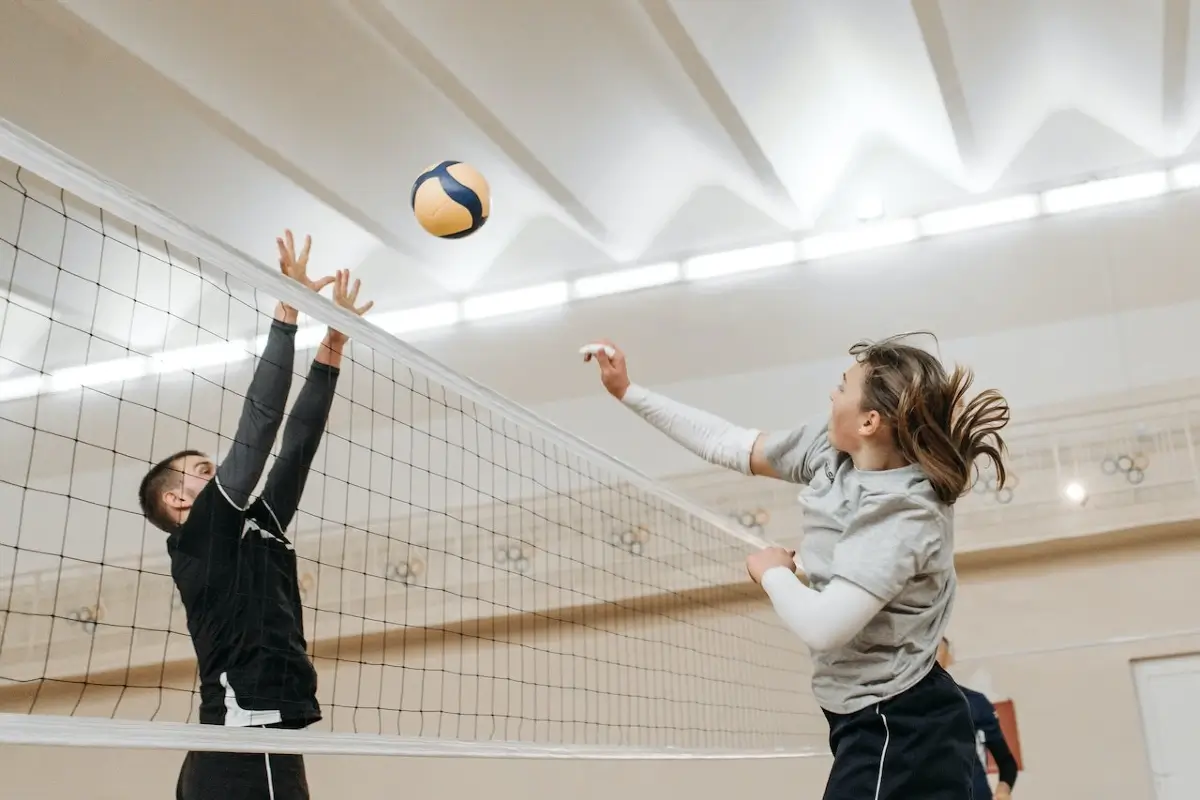Last Updated: January 16, 2024
If you’ve ever conversed with a volleyball coach, then you might already be aware of the shared idea in volleyball that defense is integral to the outcome of the game. Many coaches assume that a good defense strategy makes or breaks a volleyball match, and they are not wrong!
There’s a cliché of some sort in the volleyball world that goes something like, “defense wins championships,” which means that no matter how epic your play is, without a good defense system in place, it’s probably useless.
There are so many approaches to this strategy; one is not better or more foolproof than the other. It all depends on how you utilize them in your team and among your players, making sure that you use each one’s strengths to your advantage.
So, if you want to learn some tips and tricks for out-of-this-world volleyball defense, take a look at the list below.
What is a Volleyball Defense?

Before anything, let’s first understand what a volleyball defense is.
In the simplest of terms, you can say that volleyball defense is a direct reaction to an offense from the opponent team. This is done by a group of players in one team in an attempt to prevent the opponent team from scoring a point against them.
When it comes to defense in volleyball terms, it’s not just blocking but also backcourt digging and making contact with the ball. A volleyball team can also play the defense after the opponents deliver their attack, serve, or free ball.
Why is it Important?
As you might already have an idea by now, playing defense in volleyball is not just a strategy but integral to the overall game. Having a few tips and tricks for playing defense can give the players a great advantage over their opponents.
One of the key aspects of playing defense is the “reading” part of it. Players should have the skill to “read” the development of the attack that their opponents might be planning and correctly identify the point of attack to use their defense strategies to counter the attack.
Volleyball Defense Tips You Need To Know
Effective Movements
Once either team makes the serve, the game is in motion, and hence, all players need to pay careful attention to where the ball is traveling. Especially for the players playing the defense in a game, following the ball is the most important part of their role.
One thing to know about being a defender is that you are not responsible for just one singular spot on the court. Rather, you cover a wide area for defense, and it could be anywhere. Wherever you’re standing, if you can dig, block, or touch the ball, that’s your defensive area.
Proper Player Positioning
Proper positioning is something that will significantly increase the team’s chances of a successful dig or block against the attacks because you will be in the right place at the right time to deliver a defensive shot.
It should be noted that this positioning is not for after the attack has happened, but by using the skill of ‘reading” the attack development, position yourself in the right spot before the ball falls in your side of the court.
Body Position
Body positioning is another essential aspect of a successful volleyball defense strategy. In most cases, the stance that defense players typically take looks something like this – in low or medium body position, the butt is down, and the body moved forward, almost like a crouch, and all the weight in the balls of their feet.
This is the position that allows maximum freedom of motion for the arms, and it is also right in the middle of the floor and the ball, so you have more options for blocking and coming in contact with the ball.
You should always find a way to get in a position that is right in between the half-court and the flight of the ball so you can dig out, block the ball easily, and convert it into an offense play for your team.
Mentality
Most of all, the one thing that can make or break even the most eloquent of defense strategies is your mindset. If you are determined not to let the ball hit the floor in any instance of defense or attack, you’re well on your way to a good game.
The idea is to inculcate a mindset that makes you relentless in the pursuit of the ball while still in control of your movements.
For The Coaches
If you’re a coach looking for a way to build the most fortified defense play for your team, then there are a few things you need to keep in mind.
Studying The Competition
There is nothing as helpful as knowing what you’re going up against. This is not just about who the players are and where they come from but also about their strengths and weaknesses.
It also helps to know their play from previous matches, so you get an idea of how the team functions on the court. This will help you develop a play that can counter their weaknesses and defend their strengths.
Choosing The Right Zone For Defense
The whole point of having a defense play is to ensure that the ball does not get hit off your bounds or touch the floor on your team’s side of the net. Hence, you will have to be on high alert to cover the entirety of your side of the court whenever the opponent’s team is developing an attack.
Recommended read: Are You Making These Blocking Mistakes? 7 Common Errors to Avoid
However, it is impossible to cover the entirety of the court at all times, so set a goal with your team to decide which areas are the problem areas that you have to cover and which ones are areas that you can ignore according to the play.
Develop a System and Respond as a Team
As a coach, you will have to teach your team about responding as a unit. Teaching the players about the probable mode of attack from the opponents and how to coordinate between the blockers and the back-row diggers is a crucial point in practice.
Along with this coordination, you also need to develop a system of how to block the attack, how many players will block, and the position of the blockers. This will ultimately help you create a sort of sequence that your players will follow for their defense play.
Conclusion
Once you learn about the different factors that go into a good defense strategy and the defense process, you can develop a system specific to your team’s strengths.
It’s also noteworthy that practice is what can help you improve your play. Using defensive drills and hypothetical situations or coming up with different attacks for your players is a great way to improve your game and players’ skills.
Overall, the mentality and attitude of the team during the game is one of the best ways you can match world-class players. It is arguably the most difficult to teach, but once imparted, perseverance and determination can get you through even the toughest of opponents.
